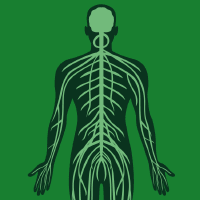Topic Menu
► Topic MenuTopic Editors


Cancer Immunotherapies: From Laboratory to Clinical Studies
Topic Information
Dear Colleagues,
Immunotherapy is a potential cancer treatment aiming to boost or change the immune system in order to fight cancer. In the past few years, significant progresses have been made in this field developing several major types of immunotherapy applied in cancer care. Despite this success, immunotherapy only works in a subset of cancers, and only a fraction of patients with cancer respond to immunotherapy. Ongoing efforts to improve our understanding of tumor immunology and the roles of the immunosuppressive tumor microenvironment are necessary to provide insights into developing more effective therapies. Combination therapies using checkpoint inhibitors with personalized cancer vaccines and novel targeted therapies directed at the tumor microenvironment and the host microbiome could be the future of cancer immunotherapy. In this context, the interface between clinicians and laboratory is crucial to allow oncologists to make the best choice of treatment for the patient and to evaluate the clinical outcome of therapy. Clinical trials testing rational immunotherapy combinations that include biomarker analysis will accelerate clinical progress, moving to effective immunotherapy in the treatment of several type of cancers. The aim of this Special Issue is to publish original research and review articles related to recent progresses in clinical cancer immunotherapy, including in vivo and in vitro studies aiming at the identification and exploration of novel targets, novel strategies and biomarkers covering several facets of immunotherapy techniques.
Dr. Alessandra Carcereri De Prati
Dr. Zong Sheng Guo
Topic Editors
Keywords
- cancer immunotherapy
- checkpoint inhibitors
- tumor microenvironment
- biomarkers
- tumor antigens
Participating Journals
| Journal Name | Impact Factor | CiteScore | Launched Year | First Decision (median) | APC |
|---|---|---|---|---|---|

Biomedicines
|
4.7 | 3.7 | 2013 | 15.4 Days | CHF 2600 |

Cancers
|
5.2 | 7.4 | 2009 | 17.9 Days | CHF 2900 |

Journal of Clinical Medicine
|
3.9 | 5.4 | 2012 | 17.9 Days | CHF 2600 |

Journal of Personalized Medicine
|
3.4 | 2.6 | 2011 | 17.8 Days | CHF 2600 |

Neurology International
|
3.0 | 2.2 | 2009 | 23.3 Days | CHF 1600 |

MDPI Topics is cooperating with Preprints.org and has built a direct connection between MDPI journals and Preprints.org. Authors are encouraged to enjoy the benefits by posting a preprint at Preprints.org prior to publication:
- Immediately share your ideas ahead of publication and establish your research priority;
- Protect your idea from being stolen with this time-stamped preprint article;
- Enhance the exposure and impact of your research;
- Receive feedback from your peers in advance;
- Have it indexed in Web of Science (Preprint Citation Index), Google Scholar, Crossref, SHARE, PrePubMed, Scilit and Europe PMC.

